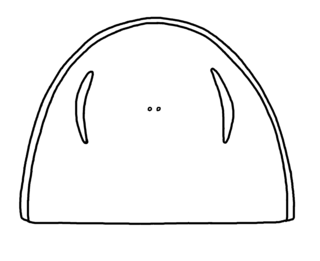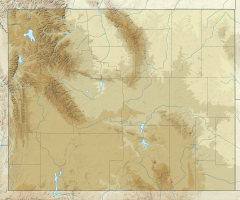
Eurypterids, often informally called sea scorpions, are a group of extinct arthropods that form the order Eurypterida. The earliest known eurypterids date to the Darriwilian stage of the Ordovician period 467.3 million years ago. The group is likely to have appeared first either during the Early Ordovician or Late Cambrian period. With approximately 250 species, the Eurypterida is the most diverse Paleozoic chelicerate order. Following their appearance during the Ordovician, eurypterids became major components of marine faunas during the Silurian, from which the majority of eurypterid species have been described. The Silurian genus Eurypterus accounts for more than 90% of all known eurypterid specimens. Though the group continued to diversify during the subsequent Devonian period, the eurypterids were heavily affected by the Late Devonian extinction event. They declined in numbers and diversity until becoming extinct during the Permian–Triassic extinction event 251.9 million years ago.

Pterygotus is a genus of giant predatory eurypterid, a group of extinct aquatic arthropods. Fossils of Pterygotus have been discovered in deposits ranging in age from Middle Silurian to Late Devonian, and have been referred to several different species. Fossils have been recovered from four continents; Australia, Europe, North America and South America, which indicates that Pterygotus might have had a nearly cosmopolitan (worldwide) distribution. The type species, P. anglicus, was described by Swiss naturalist Louis Agassiz in 1839, who gave it the name Pterygotus, meaning "winged one". Agassiz mistakenly believed the remains were of a giant fish; he would only realize the mistake five years later in 1844.

Hibbertopterus is a genus of eurypterid, a group of extinct aquatic arthropods. Fossils of Hibbertopterus have been discovered in deposits ranging from the Devonian period in Belgium, Scotland and the United States to the Carboniferous period in Scotland, Ireland, the Czech Republic and South Africa. The type species, H. scouleri, was first named as a species of the significantly different Eurypterus by Samuel Hibbert in 1836. The generic name Hibbertopterus, coined more than a century later, combines his name and the Greek word πτερόν (pteron) meaning "wing".

Carcinosoma is a genus of eurypterid, an extinct group of aquatic arthropods. Fossils of Carcinosoma are restricted to deposits of late Silurian age. Classified as part of the family Carcinosomatidae, which the genus lends its name to, Carcinosoma contains seven species from North America and Great Britain.

Hughmilleria is a genus of eurypterid, an extinct group of aquatic arthropods. Fossils of Hughmilleria have been discovered in deposits of the Silurian age in China and the United States. Classified as part of the basal family Hughmilleriidae, the genus contains three species, H. shawangunk from the eastern United States, H. socialis from Pittsford, New York, and H. wangi from Hunan, China. The genus is named in honor of the Scottish geologist Hugh Miller.

Jaekelopterus is a genus of predatory eurypterid, a group of extinct aquatic arthropods. Fossils of Jaekelopterus have been discovered in deposits of Early Devonian age, from the Pragian and Emsian stages. There are two known species: the type species J. rhenaniae from brackish to fresh water strata in the Rhineland, and J. howelli from estuarine strata in Wyoming. The generic name combines the name of German paleontologist Otto Jaekel, who described the type species, and the Greek word πτερόν (pteron) meaning "wing".

Pittsfordipterus is a genus of eurypterid, an extinct group of aquatic arthropods. Pittsfordipterus is classified as part of the family Adelophthalmidae, the only clade in the derived ("advanced") Adelophthalmoidea superfamily of eurypterids. Fossils of the single and type species, P. phelpsae, have been discovered in deposits of Silurian age in Pittsford, New York state. The genus is named after Pittsford, where the two only known specimens have been found.

Erettopterus is a genus of large predatory eurypterid, an extinct group of aquatic arthropods. Fossils of Erettopterus have been discovered in deposits ranging from Early Silurian to the Early Devonian, and have been referred to several different species. Fossils have been recovered from two continents; Europe and North America. The genus name is composed by the Ancient Greek words ἐρέττω (eréttō), which means "rower", and πτερόν (pterón), which means "wing", and therefore, "rower wing".

Parahughmilleria is a genus of eurypterid, an extinct group of aquatic arthropods. Fossils of Parahughmilleria have been discovered in deposits of the Devonian and Silurian age in the United States, Canada, Russia, Germany, Luxembourg and Great Britain, and have been referred to several different species. The first fossils of Parahughmilleria, discovered in the Shawangunk Mountains in 1907, were initially assigned to Eurypterus. It would not be until 54 years later when Parahughmilleria would be described.

Pterygotidae is a family of eurypterids, an extinct group of aquatic arthropods. They were members of the superfamily Pterygotioidea. Pterygotids were the largest known arthropods to have ever lived with some members of the family, such as Jaekelopterus and Acutiramus, exceeding 2 metres (6.6 ft) in length. Their fossilized remains have been recovered in deposits ranging in age from 428 to 372 million years old.

Carcinosomatidae is a family of eurypterids, an extinct group of aquatic arthropods. They were members of the superfamily Carcinosomatoidea, also named after Carcinosoma. Fossils of carcinosomatids have been found in North America, Europe and Asia, the family possibly having achieved a worldwide distribution, and range in age from the Late Ordovician to the Early Devonian. They were among the most marine eurypterids, known almost entirely from marine environments.

Pterygotioidea is a superfamily of eurypterids, an extinct group of aquatic arthropods. Pterygotioids were the most derived members of the infraorder Diploperculata and the sister group of the adelophthalmoid eurypterids. The group includes the basal and small hughmilleriids, the larger and specialized slimonids and the famous pterygotids which were equipped with robust and powerful cheliceral claws.

Stylonuroidea is an extinct superfamily of eurypterids, an extinct group of chelicerate arthropods commonly known as "sea scorpions". It is one of four superfamilies classified as part of the suborder Stylonurina.

The Parastylonuridae are a family of eurypterids, an extinct group of chelicerate arthropods commonly known as "sea scorpions". The family is one of two families contained in the superfamily Stylonuroidea, which in turn is one of four superfamilies classified as part of the suborder Stylonurina.

Adelophthalmidae is a family of eurypterids, an extinct group of aquatic arthropods. Adelophthalmidae is the only family classified as part of the superfamily Adelophthalmoidea, which in turn is classified within the infraorder Diploperculata in the suborder Eurypterina.

Mycteropoidea is an extinct superfamily of eurypterids, an extinct group of chelicerate arthropods commonly known as "sea scorpions". It is one of four superfamilies classified as part of the suborder Stylonurina. Mycteropoids have been recovered from Europe, Russia, South America and South Africa. Mycteropoid specimens are often fragmentary, making it difficult to establish relationships between the included taxa. Only two mycteropoid taxa are known from reasonable complete remains, Hibbertopterus scouleri and H. wittebergensis.

Eysyslopterus is a genus of eurypterid, an extinct group of aquatic arthropods. Eysyslopterus is classified as part of the family Adelophthalmidae, the only clade within the derived ("advanced") Adelophthalmoidea superfamily of eurypterids. One fossil of the single and type species, E. patteni, has been discovered in deposits of the Late Silurian period in Saaremaa, Estonia. The genus is named after Eysysla, the Viking name for Saaremaa, and opterus, a traditional suffix for the eurypterid genera, meaning "wing". The species name honors William Patten, an American biologist and zoologist who discovered the only known fossil of Eysyslopterus.

Ciurcopterus is a genus of eurypterid, an extinct group of aquatic arthropods. Fossils of Ciurcopterus have been discovered in deposits of Late Silurian age in North America. Classified as part of the family Pterygotidae, the genus contains two species, C. sarlei from Pittsford, New York and C. ventricosus from Kokomo, Indiana. The genus is named in honor of Samuel J. Ciurca, Jr., who has contributed significantly to eurypterid research by discovering a large amount of eurypterid specimens, including the four specimens used to describe Ciurcopterus itself.

Borchgrevinkium is an extinct genus of chelicerate arthropod. A fossil of the single and type species, B. taimyrensis, has been discovered in deposits of the Early Devonian period in the Krasnoyarsk Krai, Siberia, Russia. The name of the genus honors Carsten Borchgrevink, an Anglo-Norwegian explorer who participated in many expeditions to Antarctica. Borchgrevinkium represents a poorly known genus whose affinities are uncertain.

This timeline of eurypterid research is a chronologically ordered list of important fossil discoveries, controversies of interpretation, and taxonomic revisions of eurypterids, a group of extinct aquatic arthropods closely related to modern arachnids and horseshoe crabs that lived during the Paleozoic Era.

























